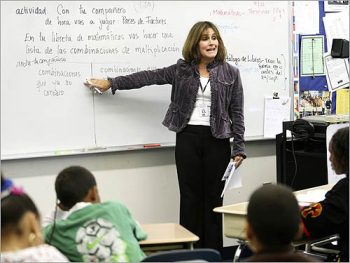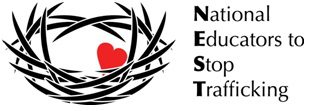Part 3: The Educator’s Role in Talking to/Teaching Children about Human Trafficking
This blog post is Part 3 of our Back-to-School Series on Human Trafficking. To read the previous blog, click here.
In today’s tumultuous climate for America’s youth we have to wonder how educators are able to stay on track when it comes to actually doing what they went to college to learn to do, teach. Students are faced with unbelievable life challenges that not many educators are equipped to, or want to, deal with. But the hard facts are that students bring their personal lives and all that is happening outside of school into the classroom and teachers are forced to deal with it all, in addition to teaching their lesson plans.

At NEST we hope to give educators tools to help them with some of the outside of school issues, so they don’t need to be educational experts and experts in everything else. As an advocate of anti-human trafficking and knowing that the average age of a victim of this terrible crime is 12-14, obviously I want education about it in the public schools. Who else is able to reach those at risk? Who else will be able to spot the signs that a child is potentially being trafficked or exploited right under their nose? Stats tell us that 90% of sex abuse before the age of 18 will occur by someone the student knows and trusts. So it makes sense that those who need the support might not be getting it from home. Other than church or youth clubs, the only other avenue for education and potential intervention must take place in the schools if these vulnerable students are to receive any chance at getting support.
A new class does not have to be created in order for human trafficking prevention education to occur (although it would be advantageous to create a topic that covers multiple social issues under one umbrella inclusive of human trafficking and sexual exploitation). There are a multitude of viable curriculum and resources available on the NEST curriculum comparison charts that can be incorporated right into existing classes such as American History, Health, Social Studies, and the like. These curriculum are available for K-12 and take anywhere from 1-5 hours (on average), and can be done as one-time classroom units or in multiple module formats. In addition, the NEST website also has other resources available for assembly gatherings, school clubs, or PTA meetings. Whatever the need or interest, there is a credible resource or curriculum available for educators to begin to utilize now, to protect your students outside the classroom, therefore allowing them to learn better inside the classroom.
In today’s world students need support from all venues available if they are going to achieve success in life once they leave the classroom. Unfortunately, education and equipping students for life is not taking place in many homes across America. So as a community we are all responsible for using whatever gifts we have to play some role in helping children understand life’s obstacles and empowering them with tools to overcome them. It’s a new world and we must adapt with it, and educators are a great first line of defense.
This article was originally published on the Human Trafficking Search blog here.
Yvonne Williams is the coordinator for National Educators to Stop Trafficking (NEST), an online warehouse of over 50 human trafficking prevention curriculum and resources. Yvonne has been an advocate against human trafficking in the United States since 2004 and is the President and Co-founder of Network for Cultural Change (formerly Trafficking in America Task Force, Inc.) dedicated to addressing cultural issues that are fueling human trafficking and other cultural issues plaguing the United States.

